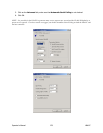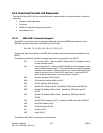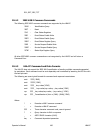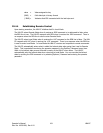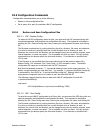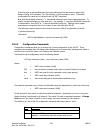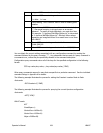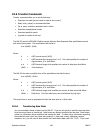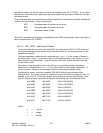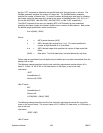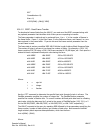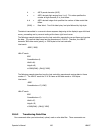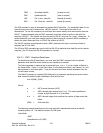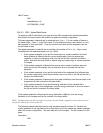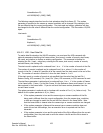Operator’s Manual LBA-PC
186
the conditions under which the frame was created (i.e. pixel scale, energy calibration, capture
resolution, etc.) you will need to also transfer the Frame Status data (see A.5.4.7 FST). If you want
10.6 Transfer Commands
Transfer commands allow you to do the following:
Download raw data (whole frames or data at the cursors)
Read, write, upload, or download data files
Set or query conditions associated with a frame
Download computational results
Download pass/fail results
Log data or results to the host
The LBA-PC uses the IEEE 488.2 Definite Length Arbitrary Block Response Data specification to send
and receive binary data. This specification has the form:
#nd..d(DAB)…(DAB)
Where:
# = ASCII pound symbol (0x23)
n = ASCII decimal digit ranging from 1 to 9. This value specifies the number of
digit elements, d..d, that follow.
d..d = ASCII decimal integer that specifies the number of data bytes that follow.
(DAB) = 8-bit data byte.
The LBA-PC also uses a modified form of the specification that has the form:
#nd..d(DAW)…(DAW)
Where:
# = ASCII pound symbol (0x23)
n = ASCII decimal digit ranging from 1 to 9. This value specifies the number of
digit elements, d..d, that follow.
d..d = ASCII decimal integer that specifies the number of data words that follow.
(DAW) = Data Word. Two 8-bit data bytes, low byte followed by high byte.
The second form is used to emphasize the fact that each pixel is a 16-bit value.
10.6.1 Transferring Raw Data
You can download a frame of data from the LBA-PC. If you do not specify a specific frame then data
from the current frame is transferred. Data frames are always transferred as raw data. Data frames
contain no information about conditions that created the data. To obtain other information regarding



